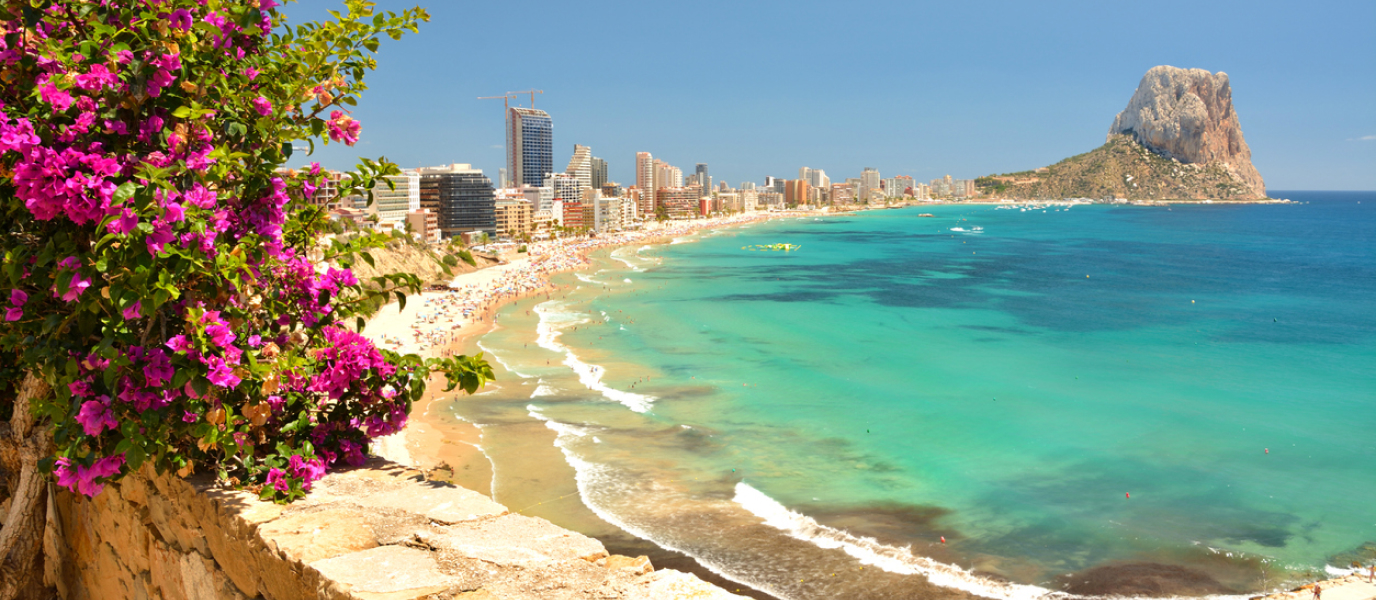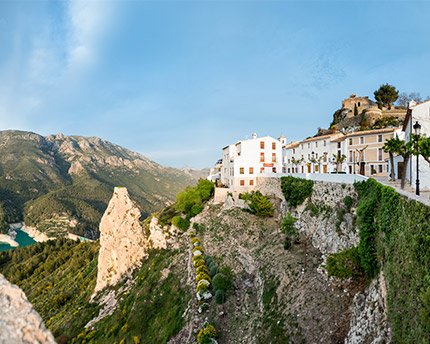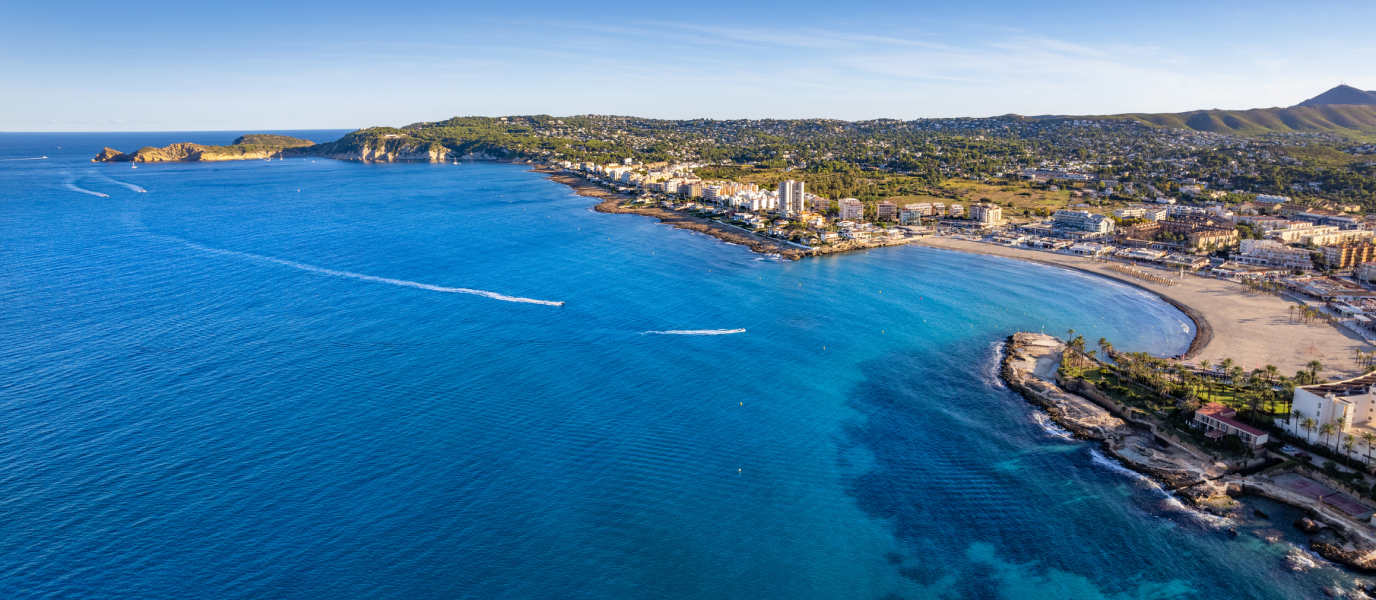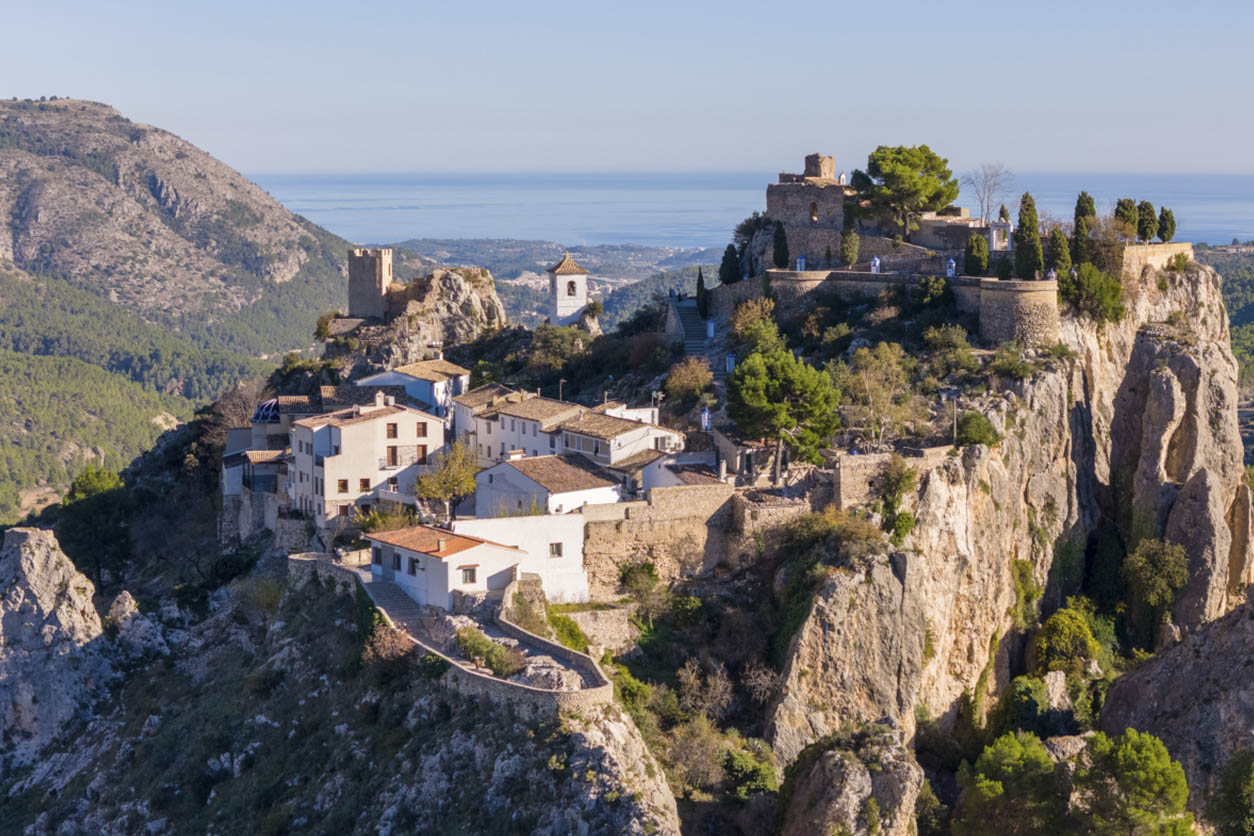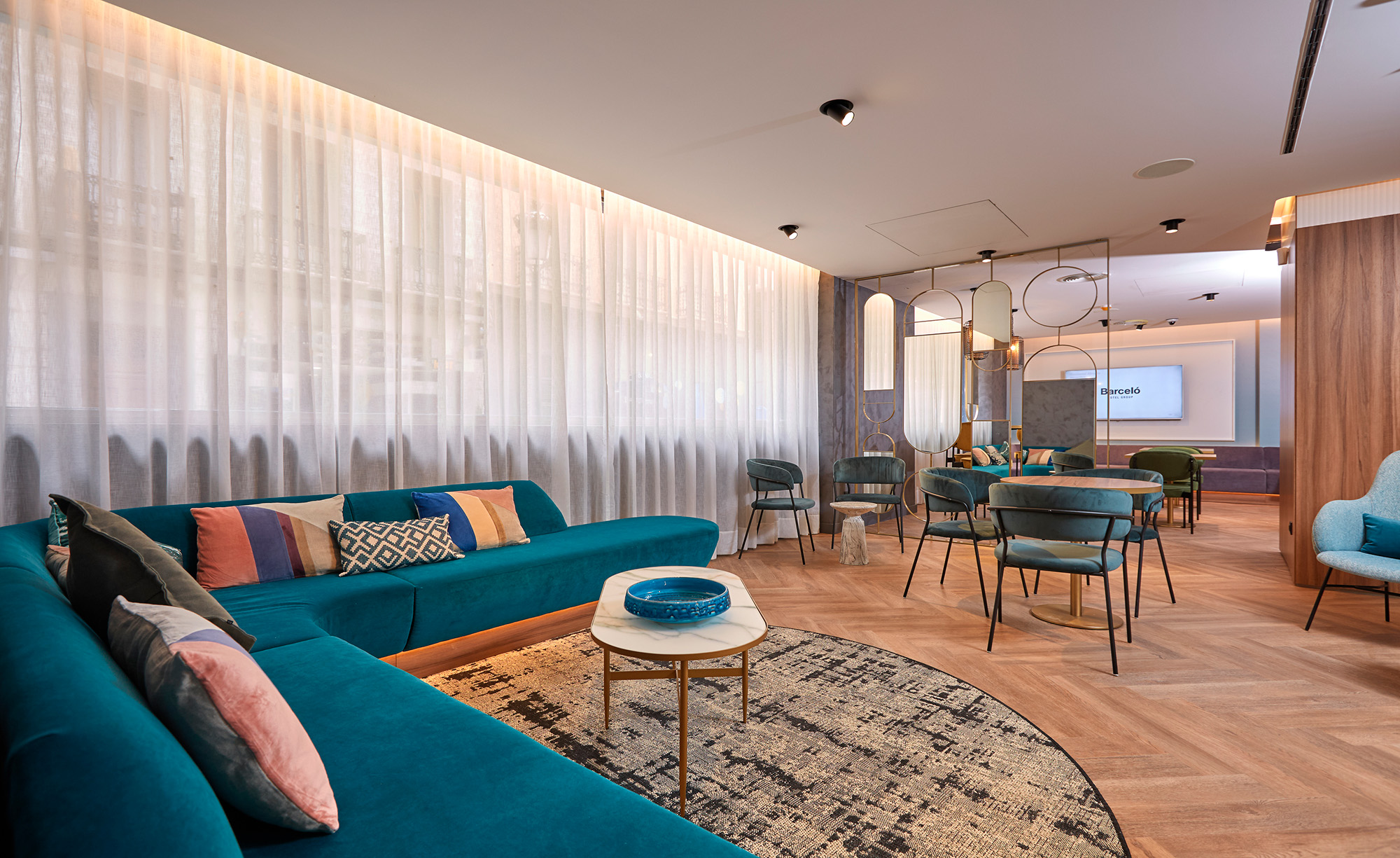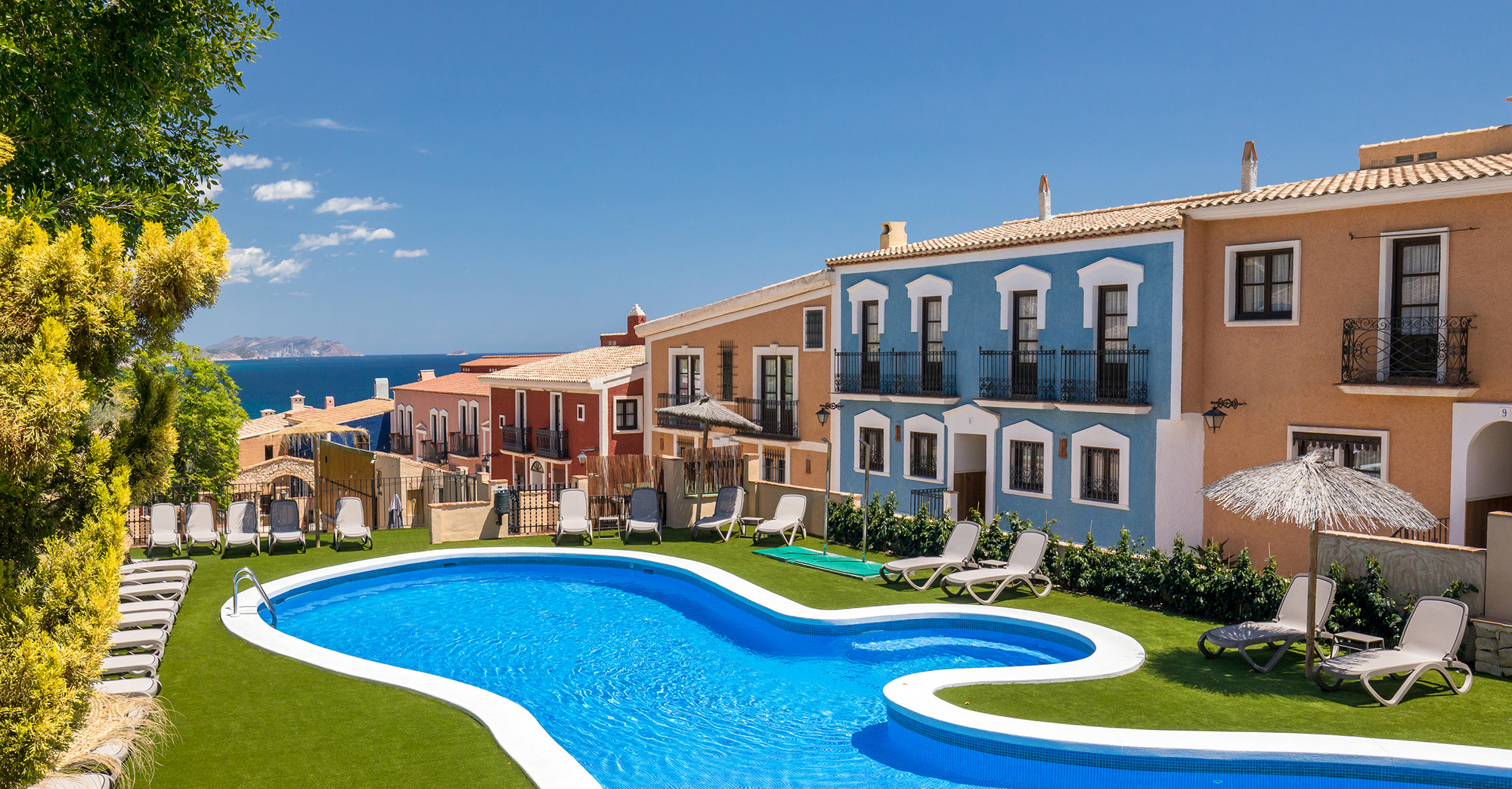The imposing rock of Ifach welcomes you to the town of Calpe. This majestic headland is the main highlight of the natural park that shares the same name, which is one of Costa Blanca’s most important landmarks.
However, Calpe is not only famous for this unique environment. It has more than 12 kilometres of coast, with long beaches or small hidden coves, which are another of its many attractions. Archaeological sites dating back to the Bronze Age, a beautiful old town and cuisine with a strong fishing tradition widen the range of possibilities. Don’t miss out on Calpe’s most emblematic corners!
The rock of Ifach
The undisputed star of the municipality of Calpe is the rock of Ifach and its natural park. This limestone mountain is over 330 metres high and is connected to the ground by a neck of land. It is one of the most beautiful geographical features on the Mediterranean coast.
Seeing the sunset with the rock of Ifach as a backdrop is a priceless sight. But even more impressive are the panoramic views offered by the mountains along the entire Levantine coast. There is a route that starts at the foot of the rock and goes all the way to the top. Furthermore, in the first sections of this trip you will pass through La Pobla d’Ifach, a medieval settlement built in the 13th century.
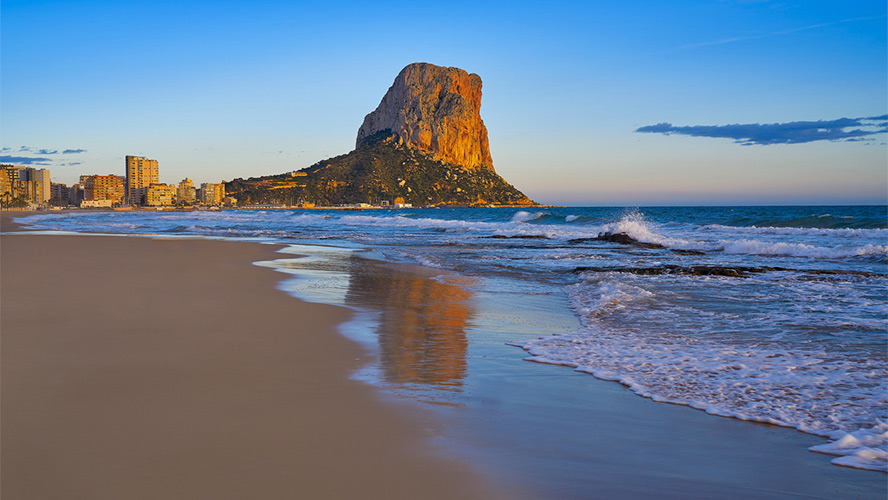
The next stop will be the Rock’s Interpretation Centre. From that point on, the ascent becomes harder and you must be prepared. If you dare to go up, the rewarding view will be worth it. It is a highly rated meeting place for climbers.
El Racó Cove
After coming down from the rock of Ifach, you can find this little jewel that is barely 70 meters in length. Its crystal clear water is one of the main assets that attract divers. Here, swimming among the fish, you will be able to see an enormous amount of marine fauna.
In fact, El Racó cove is one of the beaches in Alicante that has an underwater trail, with underwater signs showing the way. How about a refreshing swim after the rock climb? There is also a beach bar next to the cove where you can have a drink while you relax.
Calpe’s promenade, half an hour of relaxation
From El Racó cove, the lovely Príncipe de Asturias ecological promenade begins with an walkway for pedestrians only. This is a 30-minute walk around the rock of Ifach towards the port of Calpe.
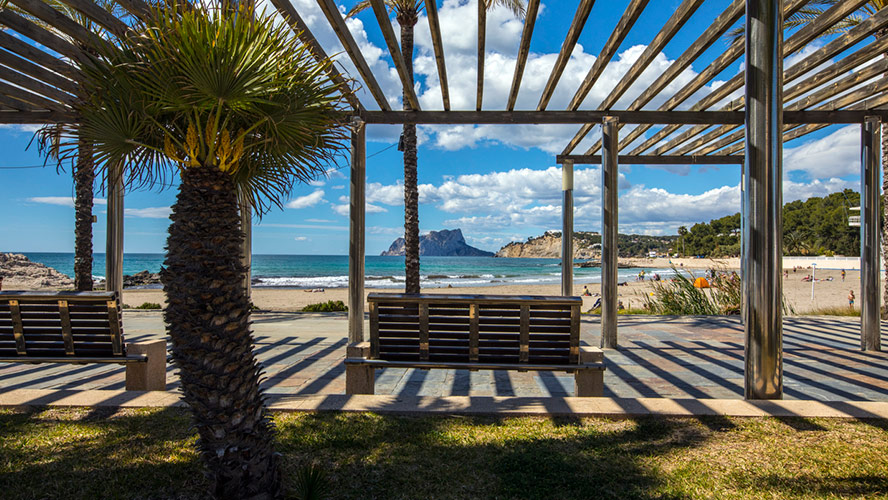
From there, you can look at the rock from a different angle as you put your back to it and turn around to discover its unyielding presence. Have your camera ready, because the intense blue of the Mediterranean Sea with the seagulls flying overhead will provide you with wonderful images.
The fish market in the port of Calpe
Another must in this municipality is the port, where you can smell its authentic fishing tradition. Among the ships that unload the goods, you will be part of the most unique atmosphere in Calpe.
The day’s main event, during which to check out the quality of the cuisine, is the fish auction at the port’s fish market. The boxes on the conveyor belts pass by their purchasers. It is one of the most popular activities in all of Calpe, which you can attend from Monday to Friday, between 5 pm and 8 pm in the afternoon. Guided tours are also offered, so you can learn about the history of the port. A truly unique experience!
The Calpe Salt Flats
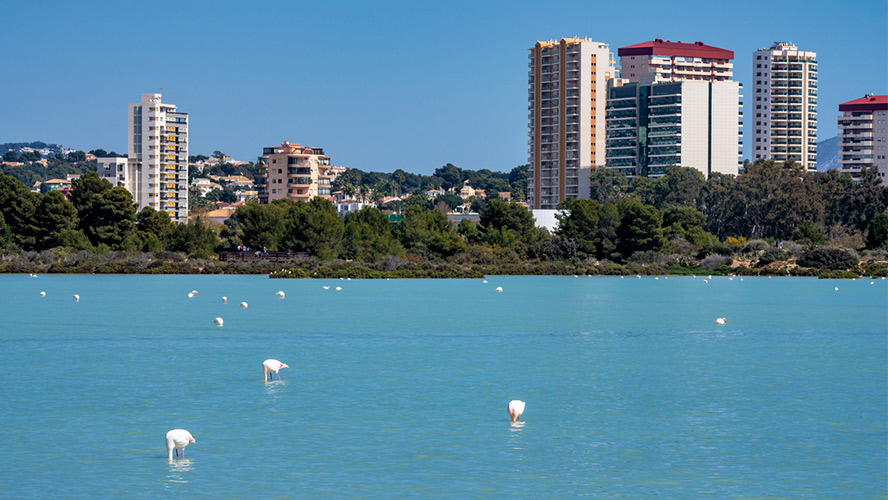
As you leave behind the surroundings of the rock of Ifach and reach the centre of the town, you will come across another of the most emblematic icons of this place, the Salt Flats. Although it is now a protected area, in the past the salt from these lagoons was used to preserve the fish.
The most curious thing is that it is located in the middle of an urban space. The position of the rock was crucial to the formation of these wetlands millions of years ago. Today it is home to many migratory birds that find a resting place here. Flamencos are one of its most famous inhabitants, so don’t miss them.
Los Baños de la Reina
How about taking a dip in some Roman ruins with the rock of Ifach in the background? The Baños de la Reina are located next to the Salt Flats, right on the promenade of El Bol beach. The ruins, which date back to the end of the 2nd or beginning of the 3rd century, included a palace full of mosaics, indicating the high status of its owner. These mosaics can currently be seen at the MARQ Museum in Alicante.
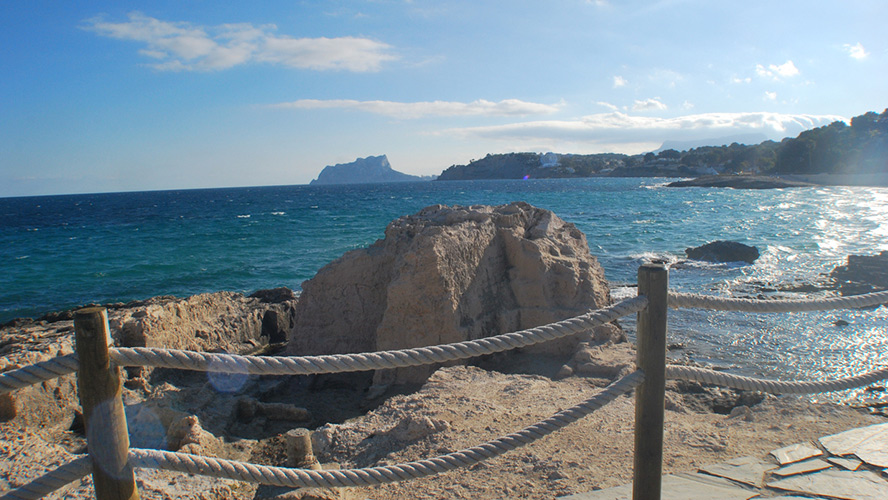
Closer to the coast are some artificial pools, which were originally intended for fish farming and salting. There are also Roman baths next to these pools and excavations have even unearthed tombs. Here you can literally bathe in the history of Calpe. Don’t miss the nearby Molí del Morelló tower, a 19th century windmill.
The beaches of Calpe
While we’re on the subject of taking a dip, make a note on your list of the best beaches in Calpe. There are more than a dozen, including beaches and coves, but almost everyone agrees that one of the must-sees is Fossa beach (also known as Levante beach). Located to the north of the rock of Ifach and with a stretch of more than 2,000 metres, it is one of the most famous beaches in the Mediterranean, because of its golden sand and its crystal clear waters. It is ideal for taking the young ones along due to the calmness of the sea, to practise scuba diving and it is wheelchair accessible. Its blue flag and array of restaurants contribute to its well-deserved reputation. To the north of this beach you will find Calalga cove, for those who want a little more privacy.
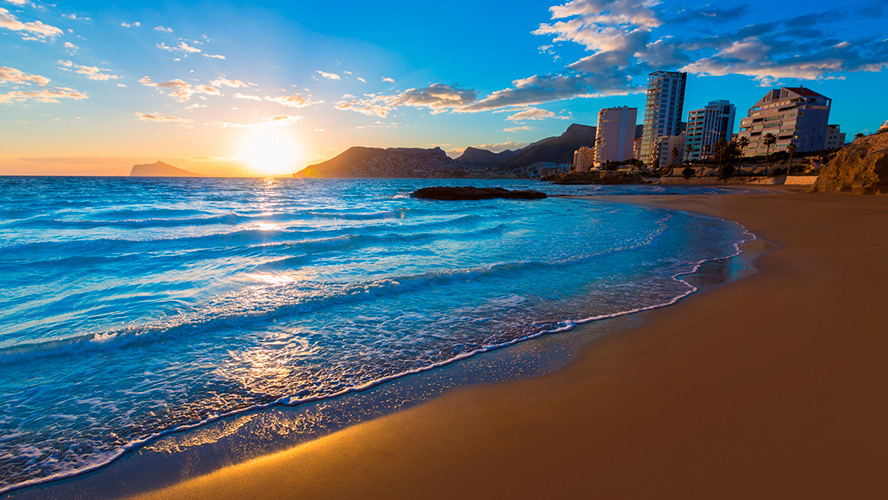
The Cantal Roig beach is located next to the port and, despite its small size, is well protected and perfect for children. The Arenal-Bol beach, next to the town of Calpe, is another of the best known and longest beaches, with one of the most spectacular views of the rock. If you are looking for a more romantic and peaceful cove, you can go to the Mallorquí cove, which is hidden and not very crowded. Diving enthusiasts can go to Les Basetes cove in the marina.
The old town of Calpe
The historical centre of this town is another of its brilliant assets. Built by the ancient populations who wanted to flee from pirate attacks, walls were built to protect the inhabitants. It is perfect for walking, as there is a designated route so that you don’t miss any details.
The 15th century walls and La Peça tower welcome us, a defensive tower where the Museo del Coleccionismo is located. The starting point is the Plaza de la Vila, where the parish of the Virgen de las Nieves stands, and leads to the typical cobbled streets that are decorated with colourful murals and mosaics.
One of the most curious corners is the Forat de la Mar, a side-street that was created between the walls so that sailors could check the sea conditions. Through it, you will arrive at Arrabal to get to know the most striking streets of Calpe, such as San Roque or Pescadores.
If you want to know more about Calpe’s past, be sure to visit the Museum of History and Archaeology, at Casa de la Senyoreta. The personal charisma of this town can still be felt when you leave the old town and visit the Llavador de la Font, an old restored public washing place.
Where to eat in Calpe
You won’t have known the town of Calpe until you have tried its cuisine that tastes of the sea. One of the best places to discover its seafood dishes is the port area and the fish market, where you can find the freshest fish. Taste the arroz del senyoret or the seafood recipes in restaurants such as El Cantal, Andalusia or Baydal.
The La Fossa beach area is also full of options for enjoying the Mediterranean diet, such as La Regata or La Terraza de Calpe. Next to the Bol beach promenade the local cuisine alternatives are very diverse: go to Blau Mar or La Montañeta.
The old town of Calpe will give you that romantic atmosphere you want for a delicious couple’s evening, which you can have at the restaurants of Siete Lunas or El Posit. The fishing tradition is the crowning glory of the table.
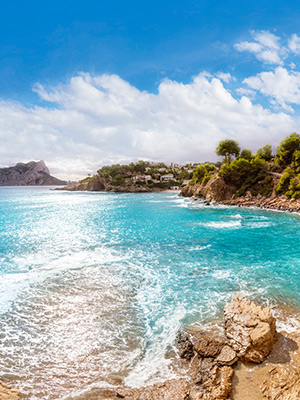
What to see near Calpe
The villages of the Costa Blanca are full of charms to be discovered, and if you are in Calpe you can take advantage of the proximity to some of them. One of the closest ones is Altea, a little more than 10 kilometres away. The white colour of its houses, the port, the promenade and its old town, known as El Fornet, make it one of the most beautiful municipalities in the Levant.
Benissa, only 10 kilometres away, is an ideal place to rest between the sea and Sierra de Bèrnia. In its coastal part, its coves and cliffs stand out, while its historic centre will take you back to the Middle Ages. An nature walk links Calpe and Benissa with a path of about 9 kilometres, which runs through the coves of both towns.
A trip to the Monte Toix viewpoint, about 5 kilometres from Calpe, is another fantastic activity. The view of rock of Ifach will take your breath away. A little further away, around 20 kilometres, you will find the natural pools of Fuentes del Algar, an area with waterfalls and great little channels, which are great for unwinding.




































































